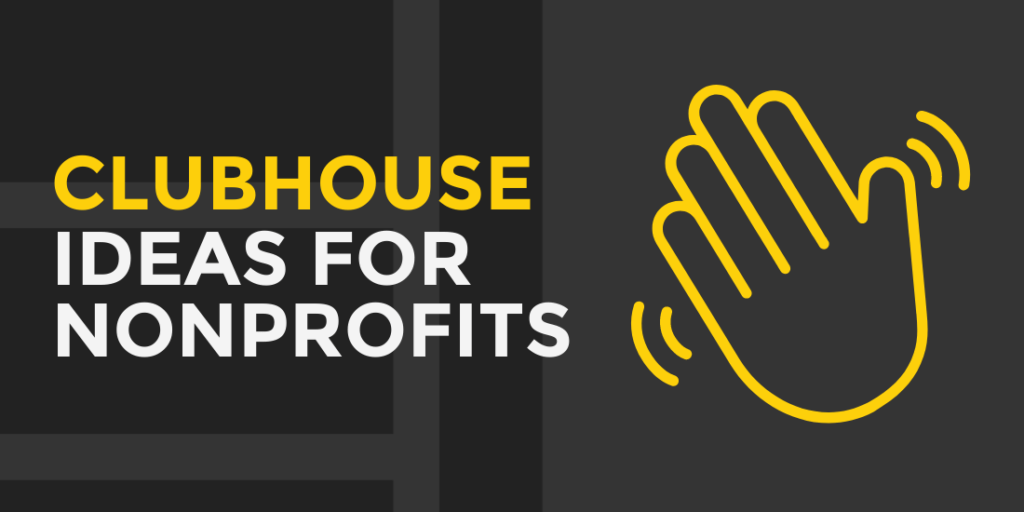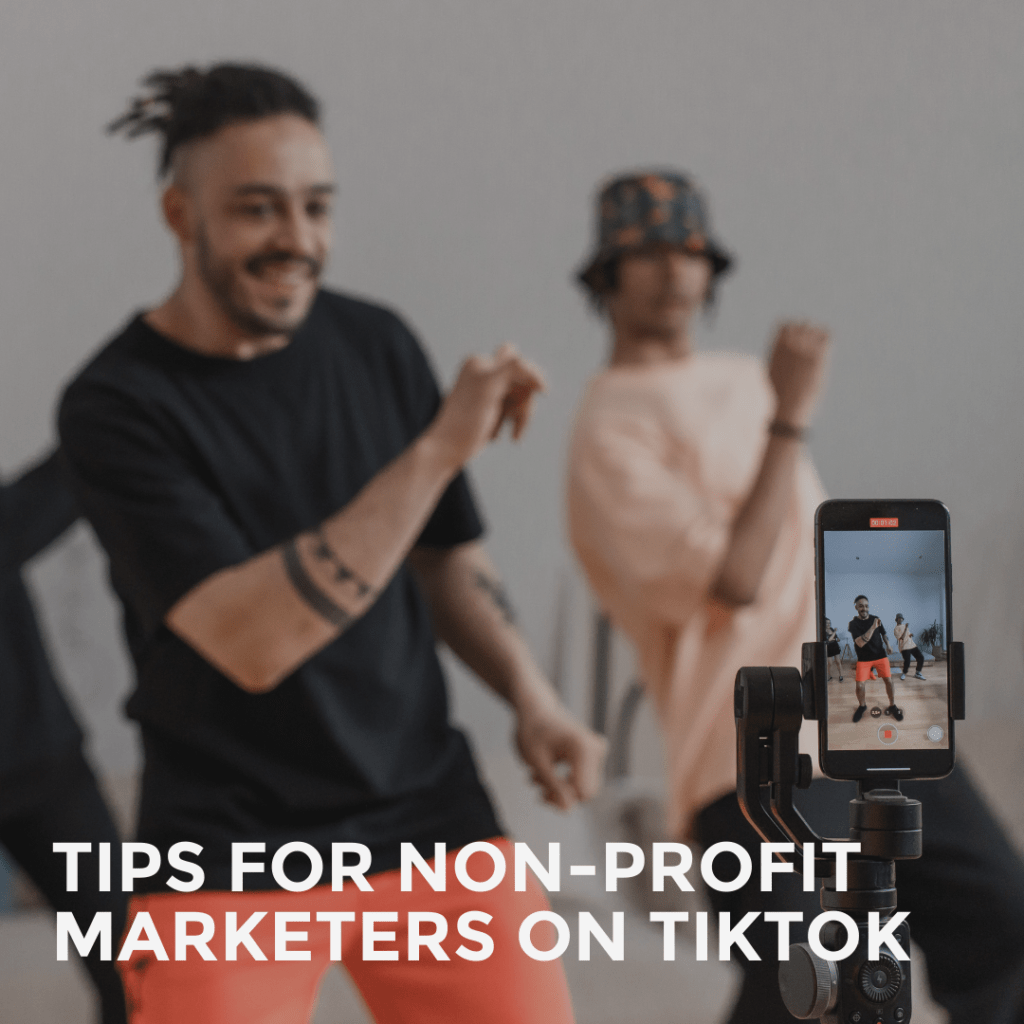In the summer of 2020, as the world self-isolated amid the pandemic, millions of us found new ways to connect remotely. One of those avenues was through an invite-only platform called Clubhouse, a voice-based social app that allows people to connect via live audio discussions centered on specific topics. Users can create Clubhouse rooms with focused topical themes, designate speakers to lead the conversation, and allow other users to join and listen or participate actively with questions and comments. Think of it as an audio panel or a live podcast platform that enables you to listen on the go or, just as easily, produce and host your own discussion, depending on your mood.
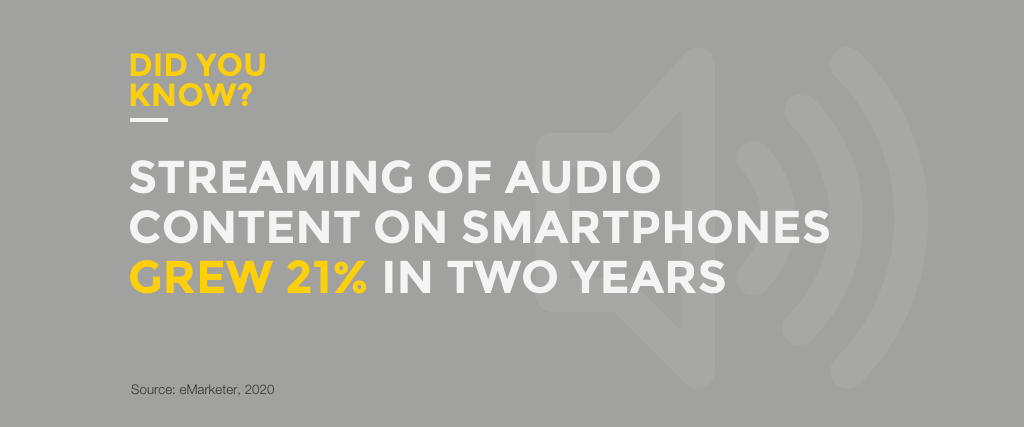
The value of the platform lies in its ability to connect people into communities of interest easily and conveniently. By allowing people to participate by simply putting on their headphones, Clubhouse eliminates the pressure to show up on video or become an amateur content editor. Users can participate actively, passively, continually, and remotely, regardless of the other aspects of life they happen to be juggling at any given moment, whether they’re sitting down at their desk, walking the dog, or putting in a load of laundry. That mobility is key for Clubhouse and a big reason why we’re already seeing similar product rollouts from the other major tech platforms, including Facebook Soundbites, Twitter Spaces, and Spotify Greenroom.
When new trends emerge and platforms debut, it can be overwhelming, especially when you’re representing not just yourself, but an entire organization. Is the trend relevant to your world? Can you ignore it? How should you incorporate a new platform into your organization’s communications strategy? And, of course, what’s the cost in terms of time and resources? While the answers to these questions will vary depending on the specifics of your situation, we can help you get started on your quest.
This article gives four pointers to help you navigate Clubhouse strategically for the purpose of determining if and how your nonprofit can engage with emerging audio trends and voice-based social media products.
1. Optimize Your Clubhouse Bio to Build Your Network
Like everything else on the internet, it’s important to optimize for search. On Clubhouse, that means optimizing your profile for keyword searches others might conduct to increase your visibility to relevant users. For example, if you hope to connect with others in the nonprofit sector, you’ll likely search for terms that include “nonprofit,” “philanthropic,” or “social good.” The same works in reverse. By including those keywords in your bio—or, perhaps, more targeted keywords specific to your sector or area of expertise—you’re more likely to surface to the top of other users’ searches.
Your Clubhouse bio is an important piece of real estate that not only helps you position yourself and tell your story, but also gives you the space to express your intention via a CTA (call to action) that indicates the type of connection you’re seeking. For example, “Looking to connect with videographers who have experience in nonprofit storytelling as well as those with a passion for helping others. Connect with me on LinkedIn and send me a message {link to your LinkedIn}.”
Here is my Clubhouse bio. Here are a couple others for reference.
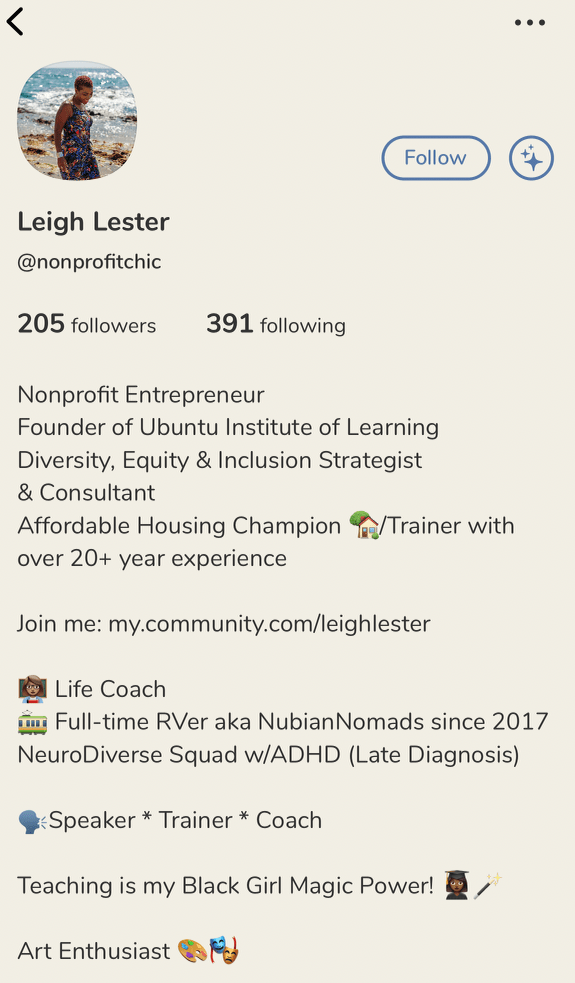
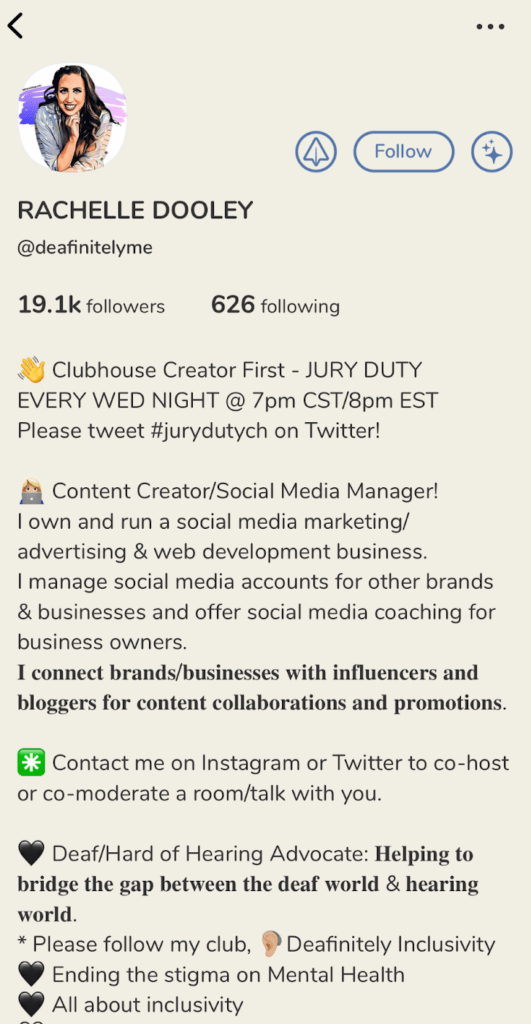
But don’t just use Clubhouse to help others discover you. Use it to build your network as a thought leader within the nonprofit community on Clubhouse. You can do this by searching relevant keywords like “social impact,” “nonprofit,” “nonprofit thought leader,” “nonprofit storytelling,” and more. See who pops up, follow them, and begin exploring the conversations they participate in (it’s easy, the first step is listening).
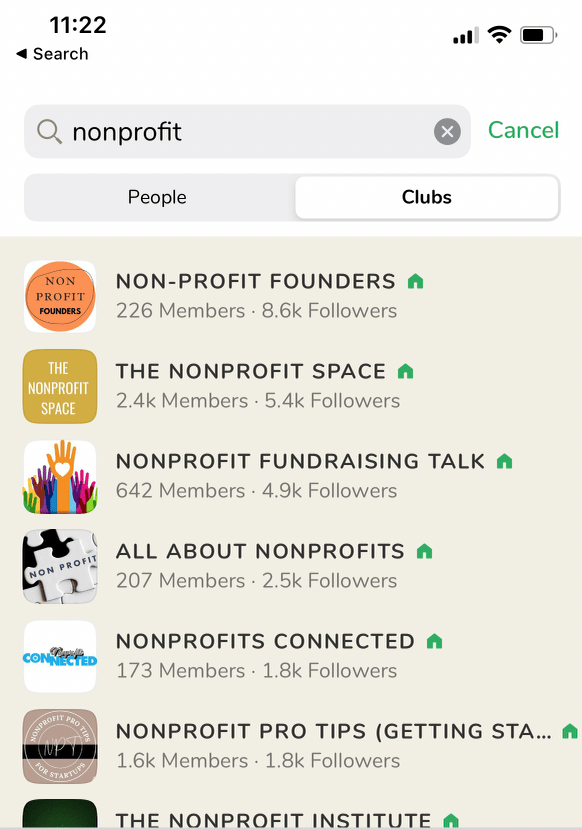
2. Follow Relevant Clubs in Your Issue Space
In addition to discovering and following individual Clubhouse users based on keyword searches, you can also follow clubs, which are essentially groups of users organized around specific themes. Clubs allow users to create and join groups within the voice-based audio app based on topical interest areas. In the same way you can search for Clubhouse users in the nonprofit community, you can also search for clubs that focus on specific topics and issue areas you care about. This is a great way for nonprofit leaders to discover, connect to, and build relationships with other key players and leading voices in their ecosystem.
For example, if you’re an environmental nonprofit, you might want to follow The Environmentalist, Environmental Pioneers, or Environmental Talks. If you work in the mental health and rehabilitative services space, you could try following one of Clubhouse’s many health-based clubs including, Mental Health Club, Black Women & Mental Health, and Mental Health Matters.
Once you follow a club, you’ll be notified anytime they host a public room (this is the Clubhouse term for a live conversation). The more clubs you follow that cater to your topic of interest, the greater number of opportunities you’ll have to build your network. For example, each time you join a Clubhouse room, you’ll be introduced to new people who happen to be participating. From there, you can go to those users’ profiles and follow them on Clubhouse or, if they’ve provided additional contact information, connect with them on the other platforms they’ve designated on their Clubhouse profile page.
3. Build Your Community Through Activity
Once you’ve been on Clubhouse for a while and have a sense of the platform, start inviting others to join as well. As a thought leader, one way to showcase your credibility and understanding of emerging trends and platforms is to educate your own network.
By connecting your mobile number to your Clubhouse account, you allow the app to review your contact list and showcase to you which of your contacts aren’t already on the platform. This will provide you the opportunity to reach out to those in your network who you think would benefit from joining.
For nonprofit leaders, finding new ways to network and connect is always of value. Think about it: You can invite program leaders and field experts, board users and major donors, advocates and activists, community partners and policymakers—the opportunity for networking and relationship building is endless. Then share this blog post with them and they will be on their way, just like you.
4. Host a Clubhouse Room
We recommend that you spend your first month or two on Clubhouse exploring the audio app’s users, clubs, and rooms and slowly building a relevant community that keeps you engaged and inspired. If all you initially do on Clubhouse is listen and participate in others’ rooms, that’s fine. Eventually, however, you’ll want to establish your own voice on the platform by hosting your own Clubhouse room! After all, we are talking about a voice-based social media app, so we definitely want to encourage you to add your own voice to the conversation at one point or another.
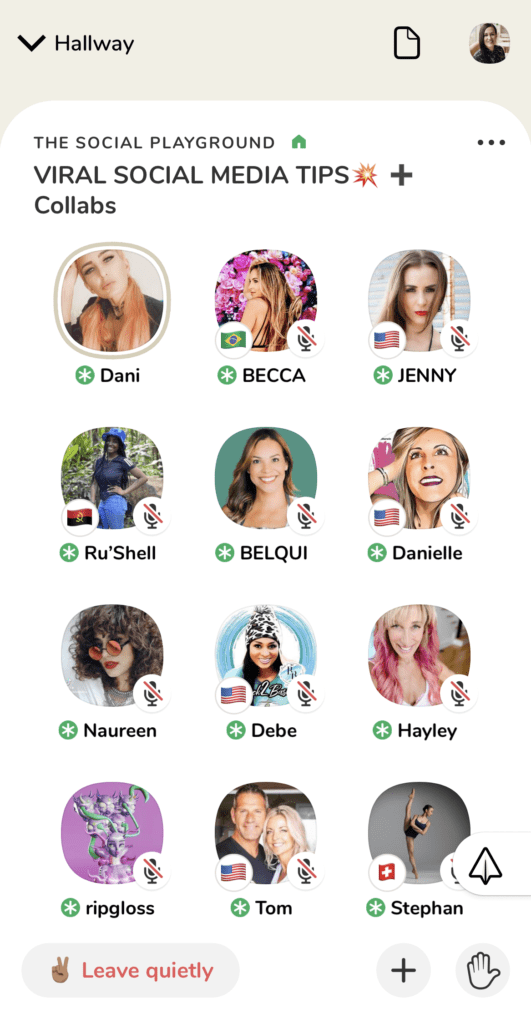
If you haven’t already, start thinking about a topic that feels relevant to who you are and how you’ve represented yourself in your Clubhouse bio. In other words, if your bio highlights your professional expertise, perhaps the first room you host on the platform shouldn’t focus on your screen printing hobby.
To establish yourself as a thought leader, consider timely topics related to your sector. What conversations would you be curious to listen to? Are there Clubhouse rooms you experienced that left things unsaid and you’d like to take the conversation further? Think about the relevant topic areas that people are actively seeking to learn more about and how you can authentically speak to those issues.
Next, consider community users whom you could invite to join and participate in your Clubhouse room. Approach your room the same way you would approach curating and leading a panel discussion. What are some of the challenges that pervade your space and whom can you convene to address those issues credibly and effectively?
Once you decide those details, you can create and schedule a public room to promote your conversation. When you schedule a Clubhouse room, the app automatically creates an event for you. From there, you can copy and share the event link to promote your room among your followers, asking them as well as your fellow speakers to share further across their respective communities to help get the word out.
Like you would with any panel, make sure to connect with your speakers ahead of time to review the run-of-show and discuss if and how you’ll handle questions in real time.
During the live conversation, make sure to sprinkle CTAs throughout the discussion to highlight ways that people can dig deeper into the issues being covered and learn more. If it’s natural and appropriate, direct people to your organization for additional information by sharing your organization’s Instagram handle or website URL.
While you’re speaking in a Clubhouse room, other users can immediately go to your profile to learn more about you. Don’t be surprised when you conclude the discussion and see that you’ve gained a few new followers. Hosting and speaking in a Clubhouse room automatically creates interest as people are always looking to connect with others who share similar interests.
Although the latter half of the 20th century and much of the 21st was dominated by visual communications and video, as with all trends, things come and go only to come back again with a slightly different spin. Over the past three years, audio has re-entered the mainstream, first through podcasts and now with live voice-based social media. Case in point: streaming of audio programs and content from smartphones jumped 21 percent between Q1 2018 and Q1 2020 (Source: eMarketer).
Conclusion: Just Start Listening
While you don’t have to jump head first into the voice-based social media space, we highly encourage you to begin exploring audio apps as a communications channel and think about how you might adapt your existing communications programs and materials—from town halls to moderated panels to field research and theory of change presentations—to this-what’s-old-is-new format. Don’t forget, all you have to do to get started is listen.
If you’re feeling inspired and ready to explore, head over to Clubhouse’s New User Guide and dive into all the biggest topics and questions.
This article was written by Lindsay Williams.
To stay up to date on the latest from Entertain Impact, subscribe to receive our emails and follow us on social media.
SIMILAR BLOGS:

